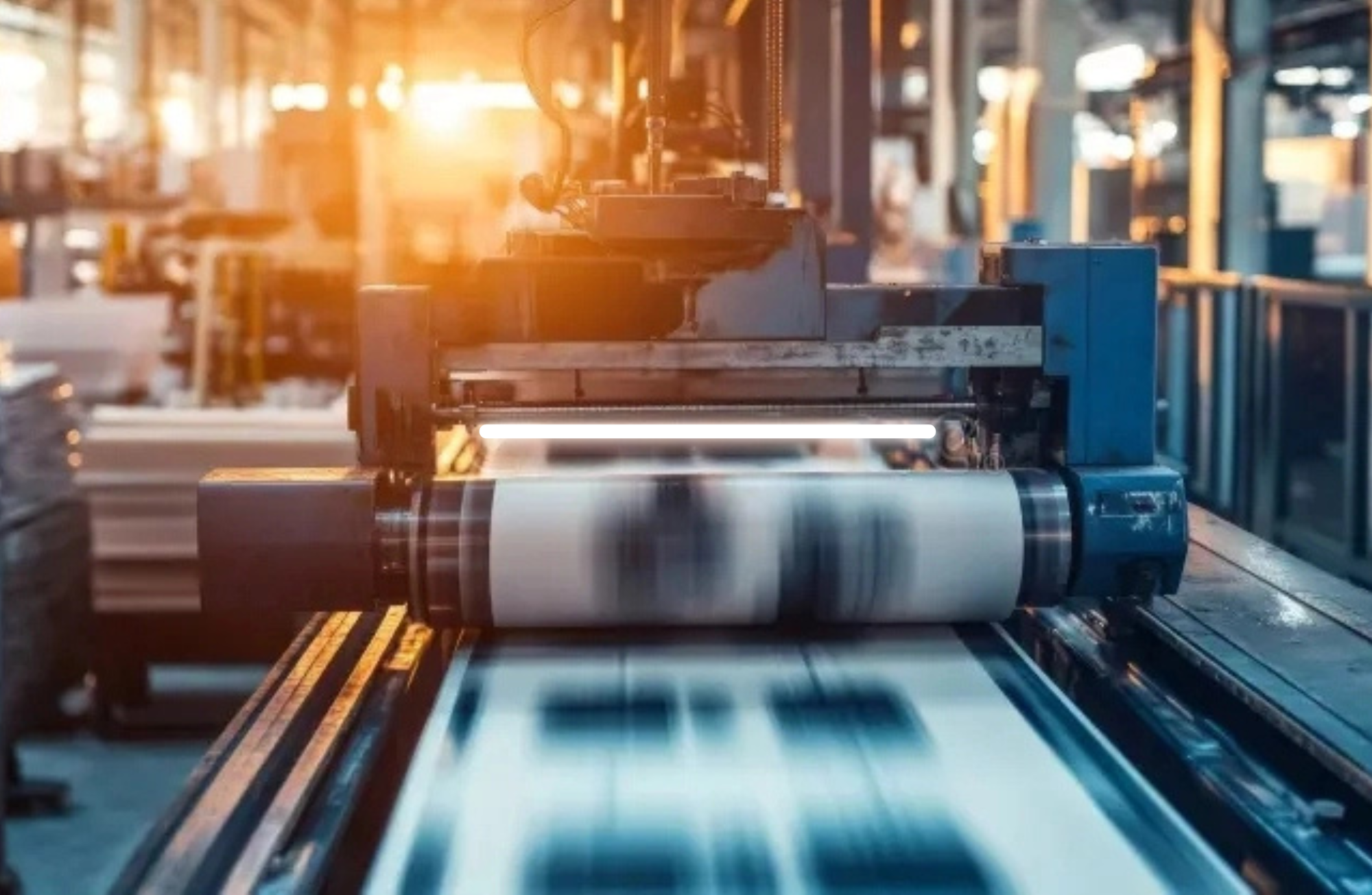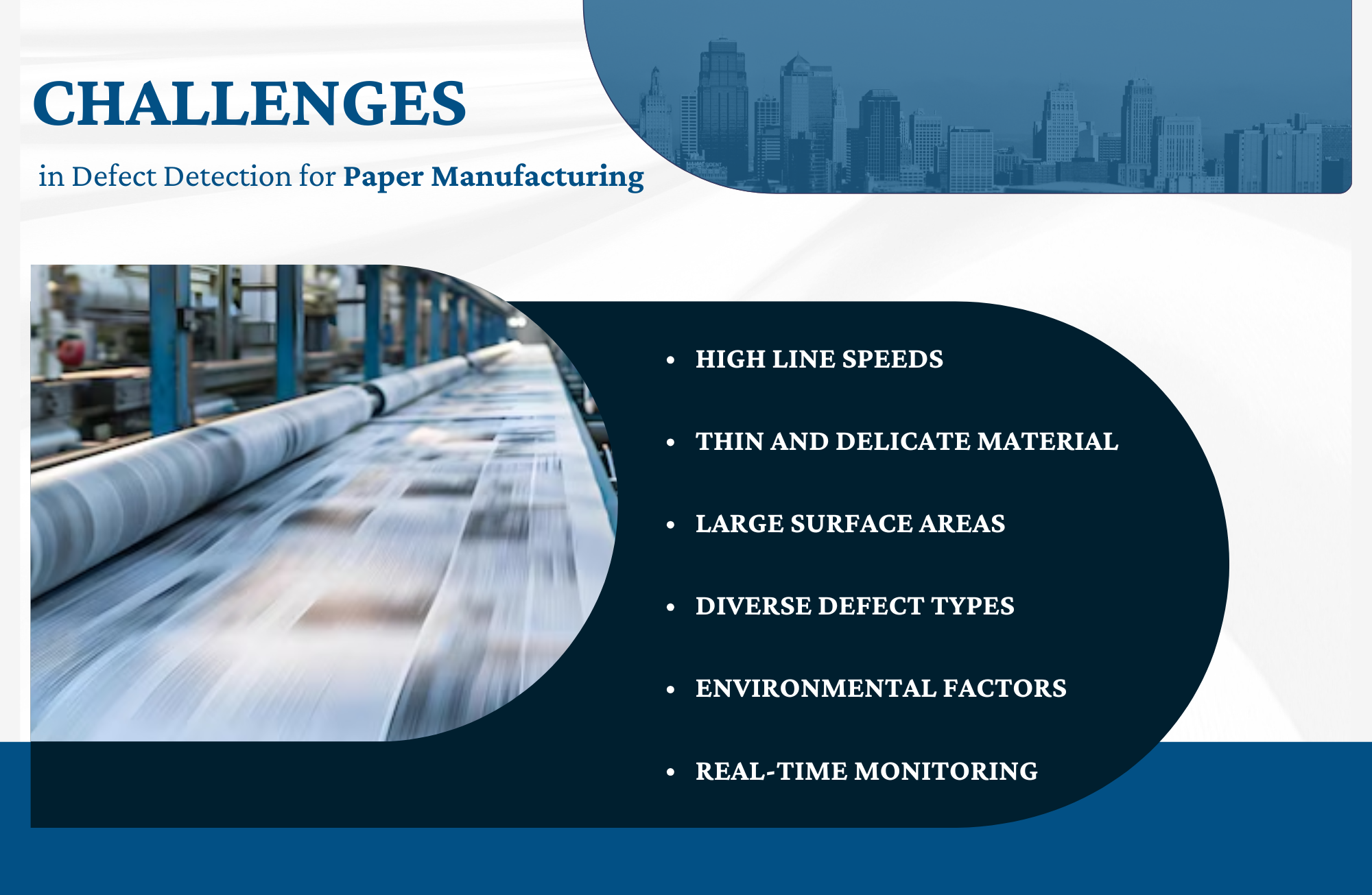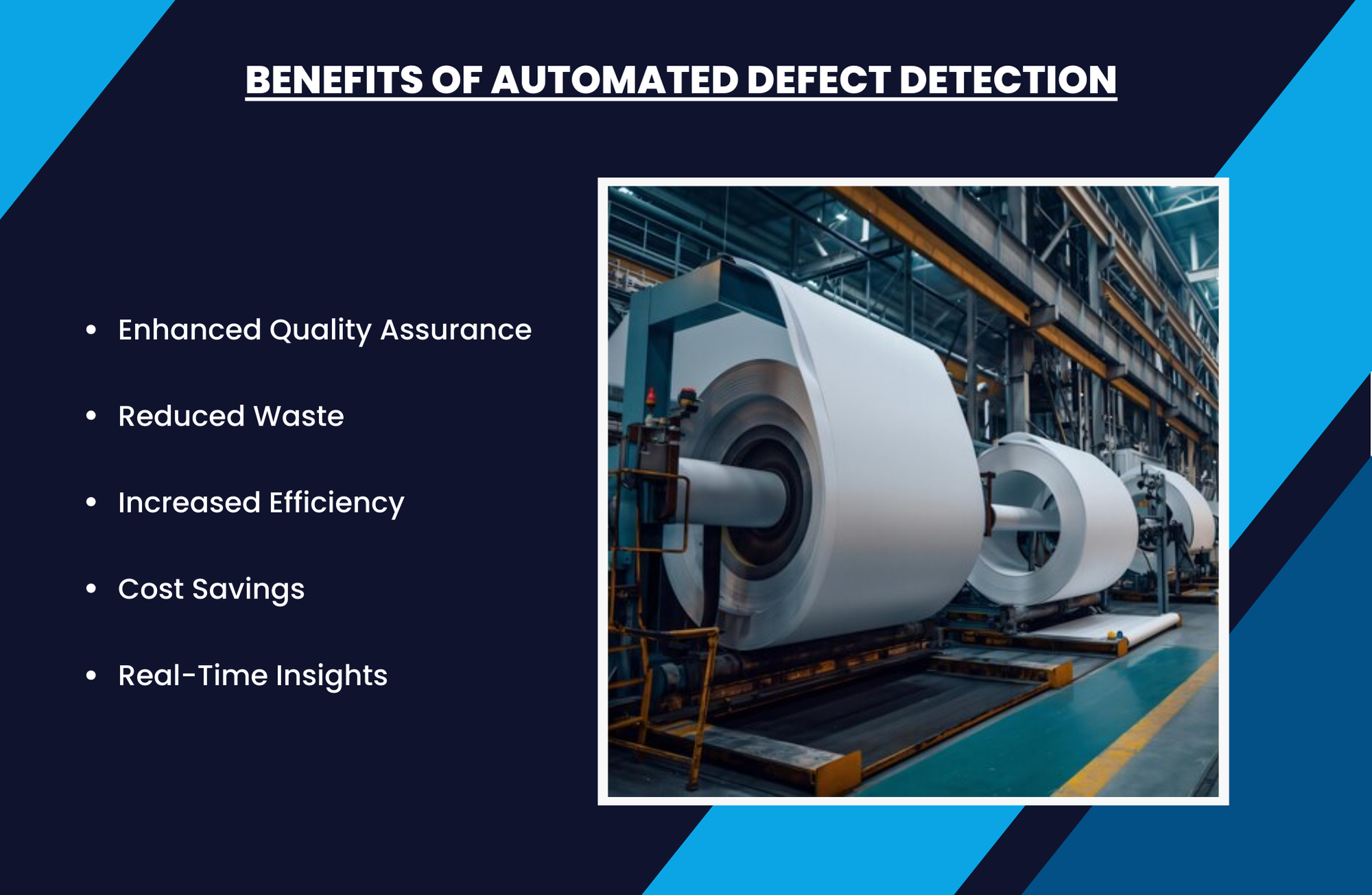Defect Detection for paper manufacturing in a high speed line
Published on: Dec 24, 2024

Written by: Team Intelgic
Defect Detection for Paper Manufacturing in High-Speed Lines
The paper manufacturing industry operates in a fast-paced environment where quality control is critical. Defects such as tears, wrinkles, holes, discoloration, streaks, and contamination can compromise the functionality and aesthetics of the final product, leading to customer dissatisfaction and production waste. Detecting these defects in a high-speed production line is a challenging but essential task for ensuring product quality and optimizing manufacturing efficiency.

Challenges in Defect Detection for Paper Manufacturing
1. High Line Speeds
-
Paper production lines can operate at speeds exceeding 1,000 meters per minute, making it challenging to inspect every meter accurately in real time.
2. Thin and Delicate Material
-
Paper is thin and prone to defects during production processes like pulping, pressing, and drying. Handling it without causing additional damage is critical.
3. Large Surface Areas
-
Rolls of paper can be meters wide, requiring comprehensive inspection systems that cover the entire width uniformly.
4. Diverse Defect Types
-
Defects can vary widely, including tears, wrinkles, pinholes, streaks, edge cracks, discoloration, and dirt spots. Detecting all these requires adaptable inspection algorithms.
5. Environmental Factors
-
Paper mills are often dusty, humid, and hot, conditions that can interfere with traditional inspection systems.
6. Real-Time Monitoring
-
High-speed production demands immediate defect detection and alerting to minimize waste and adjust process parameters.

Common Defects in Paper Manufacturing
-
Tears and Holes:
-
Caused by mechanical stress or improper handling during pressing or drying.
-
-
Wrinkles and Creases:
-
Result from uneven tension or misaligned rollers in the production line.
-
-
Streaks and Lines:
-
Caused by inconsistencies in coating or contaminants on rollers.
-
-
Discoloration:
-
Uneven coloring or shading due to variations in pulping or chemical treatments.
-
-
Edge Cracks:
-
Cracks along the edges due to over-drying or improper tension.
-
-
Contamination:
-
Dirt, dust, or other foreign particles embedded in the paper.
-
Technologies for Defect Detection in High-Speed Paper Manufacturing
1. Machine Vision Systems
Machine vision systems are at the heart of automated defect detection, capturing high-resolution images of the paper surface in real time.
-
Line-Scan Cameras:
Ideal for high-speed lines, capturing images line by line and stitching them into a full-width view of the paper roll. -
Area-Scan Cameras:
Useful for inspecting stationary paper segments or slower production lines. -
Multi-Camera Setups:
Cover the entire width of the paper roll, ensuring comprehensive surface inspection.
2. Advanced Lighting Techniques
Proper lighting enhances the visibility of defects on the paper surface.
-
Diffuse Lighting:
Provides even illumination to highlight subtle defects like wrinkles or discoloration. -
Directional Lighting:
Accentuates surface irregularities by creating shadows on defects like creases or streaks. -
Backlighting:
Ideal for detecting pinholes or tears by making them appear as dark spots.
3. AI-Powered Defect Detection
AI algorithms analyze the images captured by machine vision systems to detect, classify, and report defects in real time.
-
Pattern Recognition:
AI models are trained on datasets of paper defects to recognize anomalies such as streaks, tears, or discoloration. -
Adaptive Learning:
AI continuously improves its detection accuracy by learning from new defect types encountered in production. -
Defect Classification:
AI categorizes defects by type, size, and severity, enabling prioritized corrective actions.
4. Real-Time Data Processing
For high-speed lines, real-time data processing is essential to keep pace with production.
-
Immediate Feedback:
The system sends alerts to operators when defects are detected, enabling instant corrective actions. -
Process Monitoring:
Provides insights into recurring defects, helping identify root causes and optimize processes.
5. Environmental Protection for Equipment
Inspection systems in paper mills must be designed to withstand harsh conditions.
-
Dust-Proof Enclosures:
Protect cameras and sensors from contaminants in the environment. -
Cooling Mechanisms:
Prevent overheating of cameras and controllers during continuous operation.
How Automated Defect Detection Works
-
Imaging:
Line-scan cameras capture high-resolution images of the moving paper sheet in real time. -
Lighting:
Optimized lighting highlights surface defects, enhancing visibility for the imaging system. -
AI Analysis:
AI algorithms process the images, detecting and classifying defects based on predefined criteria. -
Real-Time Alerts:
The system generates alerts for detected defects, allowing operators to take immediate action. -
Defect Mapping and Reporting:
The system logs defect locations, types, and sizes for quality control and process improvement.
Applications of Defect Detection in Paper Manufacturing
-
Printing Paper:
-
Ensures defect-free sheets for high-quality printing applications.
-
-
Packaging Materials:
-
Detects defects in corrugated sheets, kraft paper, or coated packaging materials.
-
-
Specialty Papers:
-
Inspects decorative, thermal, or photographic papers for surface irregularities and discoloration.
-
-
Tissue and Hygiene Products:
-
Detects tears, pinholes, and streaks in thin, delicate materials like tissues and napkins.
-
Benefits of Automated Defect Detection
1. Enhanced Quality Assurance
-
Detects even the smallest defects, ensuring consistent quality and customer satisfaction.
2. Reduced Waste
-
Identifies defects early, minimizing material waste and production downtime.
3. Increased Efficiency
-
Automates the inspection process, reducing reliance on manual labor and speeding up quality checks.
4. Cost Savings
-
Reduces rework and rejects, lowering overall production costs.
5. Real-Time Insights
-
Provides actionable data on defect trends, helping manufacturers optimize their processes.

Intelgic’s Expertise in Defect Detection for Paper Manufacturing
At Intelgic, we specialize in designing and implementing custom Automated Optical Inspection (AOI) systems tailored to the unique needs of paper manufacturing. Our solutions combine high-resolution imaging, AI-powered analysis, and real-time monitoring to deliver reliable and efficient defect detection for high-speed production lines.
Key Features of Intelgic’s Systems
-
Scalable Solutions:
Systems designed to handle wide paper rolls and high production speeds. -
AI-Driven Precision:
Advanced algorithms for detecting and classifying diverse paper defects. -
Robust Design:
Equipment built to withstand harsh industrial environments. -
Seamless Integration:
Easily integrates with existing production lines for minimal disruption.
Defect detection in paper manufacturing is a critical aspect of quality control, especially in high-speed production environments. Advanced technologies like Machine Vision AI and Automated Optical Inspection (AOI) systems offer precise, reliable, and scalable solutions to overcome the challenges of inspecting paper surfaces.
Intelgic’s cutting-edge systems ensure that manufacturers can achieve consistent product quality, reduce waste, and enhance operational efficiency. Contact Intelgic today to learn how our tailored solutions can revolutionize your paper manufacturing processes.

